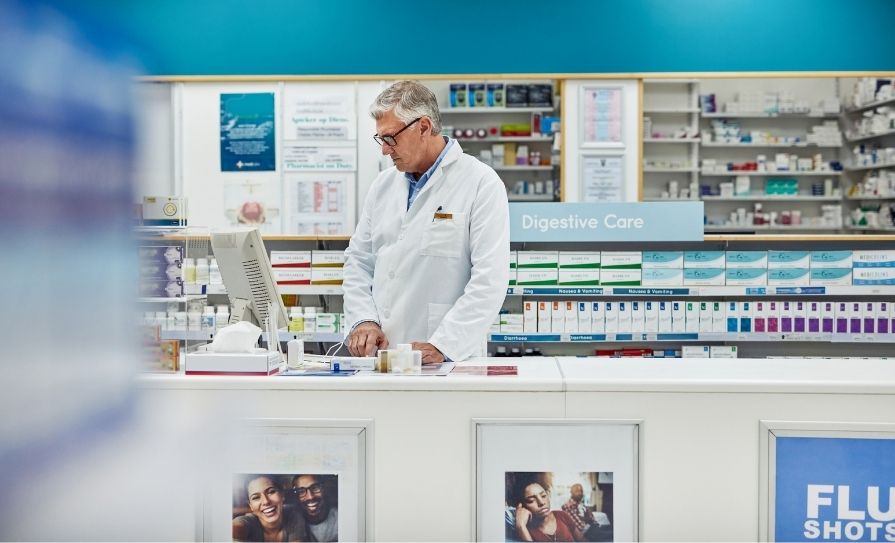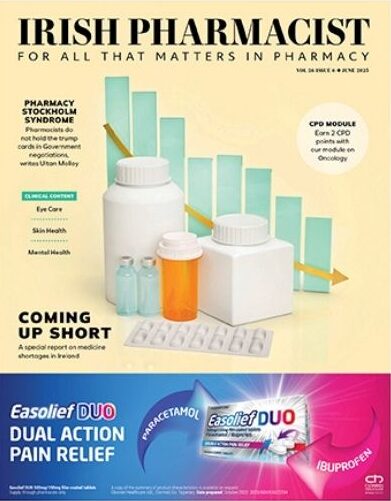In a summer mood, Dr Des Corrigan investigates the potential therapeutic properties of the humble strawberry or raspberry
Roadside signs that tell passing motorists ‘Wexford Strawberries on Sale Here’ are as traditional a symbol of the Irish summer as rain-drenched picnics, mud-splattered music festivals and the GAA Championship. My first sighting this year of one such mobile ‘shop’ got me thinking about the possibility of strawberries and raspberries having beneficial properties, apart from the fact that so many people like to eat them all-year-round.
The strawberry is a hybrid species of the genus Fragaria, first bred in Brittany in the 1750s, prior to which it was wild strawberries that were cultivated for their fruits. A strawberry is actually an aggregate fruit consisting of a swollen fleshy receptacle that supports a cluster of up to 200 of what are the actual dry fruits or achenes. The phenolics from those achenes are 16 times richer in antioxidant activity compared to that oh-so-flavoursome receptacle, according to a 2016 article in the International Journal of Molecular Sciences. An evidence-based review of strawberry as a health promoter in Food and Function in 2015 noted that the fruits were an excellent source of vitamins A, E, K and especially C (60mg per 100grams of fruit). They are also one of the richer natural sources of folate. The fruit also contains ellagitannins and anthocyanins, the latter being responsible for the characteristic colour. These phenolics, not surprisingly, are linked to antioxidant and anti-inflammatory effects. They are able to detoxify damaging free radicals, modulate the expression of genes involved in metabolism, cell survival and proliferation, and to protect and repair DNA damage. One flavanol found in strawberries as well as other fruits is called fisetin and in a mouse model of stroke, it was found to protect the brain against ischaemic injury.
Strawberry extracts show positive effects in animal models of obesity and against platelet inflammatory mediators of atherosclerosis. In human studies, consumption of strawberry powder decreased C-Reactive Protein and Interleukin-6, as well as post- prandial glucose in overweight adults. Large-scale cohort studies showed that supplementation with anthocyanins derived mainly from dietary intake of strawberries and blueberries significantly reduced the risk of hypertension and coronary heart disease. Supplementation with 50g per day of freeze-dried strawberry powder resulted in positive effects on cholesterol and glucose levels in a 10-year follow-up study.
The fruits do not, however, feature in the EMA’s Community Herbal Monograph (CHM) on Wild Strawberry Leaf. This includes the dried leaves of four different Fragaria species including, for some strange reason, the cultivated hybrid. In the CHM, the EMA recognises wild strawberry leaf as a traditional herbal medicinal product (THMP) to increase the amount of urine to achieve flushing of the urinary tract as an adjuvant in minor urinary complaints. It is also listed as a THMP for the symptomatic treatment of mild diarrhoea.
A similar indication claim appears in the CHM for another classical summer fruit, namely the raspberry (Rubus idaeus). Here again, the EMA features the leaves and not the fruits. The CHM includes two other indication claims, namely as a THMP for the symptomatic treatment of mild inflammation in the mouth or throat and pre-eminently
for the symptomatic relief of minor spasm associated with menstrual periods. This latter has undoubted links to the traditional use of raspberry leaf tea to stimulate and facilitate labour, shortening its duration.
The Assessment Report prepared by the herbal committee at the EMA noted that raspberry leaf tea could inhibit contractions in uterine strips from both pregnant and non-pregnant rats. An extract showed effects in vivo in both cat and rabbit uteri. In cats, there was a triphasic effect of relaxation, then contraction followed by a further relaxation. An Australian study in 96 pregnant women given 2.4g of a raspberry extract daily for 32 weeks showed no adverse effects on either mothers or babies. There were no significant differences in labour characteristics compared to a control group. The EMA committee determined that the lack of safety data meant that this traditional use during labour could not be included as an indication in the CHM.
When it comes to the berries, it is hardly surprising that they are antioxidant-rich due to their content of complex polyphenols, including the anthocyanins responsible for their characteristic colour. A 2016 review in Advances in Nutrition revealed those polyphenols influenced oxidative stress and inflammation in both in vitro and in vivo models of arthritis, vascular function and atherosclerosis. Despite this, human studies showed no impact on risk factors for coronary vascular disease. Similarly, pre- clinical studies suggest a protective effect in diabetes, but two human studies showed no differences between 100g of raspberry and controls on standard diabetic markers. A 2021 review in the International Journal of Environmental Research and
Public Health on the effects of dietary red raspberry on pre-diabetes and type 2 diabetes mellitus parameters noted that the fruits were, at 6.4 per cent, one of the highest sources of dietary fibre in whole foods. There were three RCTs involving supplementation of 250g of frozen fruit alongside a high-fat challenge breakfast that resulted in decreases in plasma glucose levels in patients with either type 2 diabetes or pre-diabetes and obesity.
While consumption of the fresh fruit (that nowadays never seems to go out of season) is commercially important, most of the world’s raspberry production is processed into juice or jam, leaving a large amount of by- product, including the seeds. These contain protein (12 per cent) and up to 23 per cent of an oil rich in polyunsaturated acids. This oil has antimicrobial, antioxidant and anti- inflammatory effects, but has only really been exploited in the cosmetics industry. One of the most studied components from raspberries is the one responsible for their characteristic aroma and taste. This compound, usually referred to as Raspberry Ketone, is also found in other berries and fruits. In vitro and animal studies showed positive effects as an anti-obesity agent, so the supplement industry went into overdrive in commercialising this butanone derivative. Since raspberries contain just 4.3mg per kilo of fruit, extraction of the natural molecule is expensive, thus it
is usually synthesised for use as a food supplement. As such, much higher amounts are consumed than would be possible using fresh fruit. One estimate in a 2015 paper in Regulatory Toxicology and Pharmacology calculated that supplement intake could be 368 times the highest estimate of dietary exposure and at the upper dose range, it would be equivalent to over 23kg of fruit daily! The authors used structure activity modelling to suggest potential cardiotoxicity and reproductive effects at such high doses, but there appears to be no laboratory confirmation of this. On the contrary, a 2020 update in Plants noted that raspberry ketone has GRAS status.
It further noted that only a single clinical study in obese patients had been reported and while weight loss was reported in the 45 obese participants, the role of raspberry ketone was unclear, as the test product also contained caffeine and synephrine-containing bitter orange that could explain the effect.
It seems as if these berries not only taste delicious, they just might do you some good as well. So enjoy!
CONTRIBUTOR INFORMATION
Dr Des Corrigan, Best Contribution in Pharmacy Award (winner), GSK Medical Media Awards 2014, is a former Director of the School of Pharmacy at TCD and won the Lifetime Achievement Award at the 2009 Pharmacist Awards. He was chair of the Government’s National Advisory Committee on Drugs from 2000 to 2011. He currently chairs the Advisory Subcommittee on Herbal Medicines and is a member of the Advisory Committee on Human Medicines at the IMB. He is a National Expert on Committee 13B (Phytochemistry) at the European Pharmacopoeia in Strasbourg and he is an editorial board member of the Journal of Herbal Medicine and of FACT — Focus on Alternative and Complementary Therapy.







